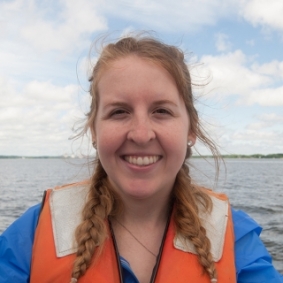Eight students will be presenting the summer work at the Ocean Sciences Meeting in March 2022!
Danci (Johnston) Dollins, Oklahoma State University Stillwater
Class Year:
2017Mentor:
Carys Mitchelmore, Ph.D.Project Title:
Advancing Settlement of Oyster Larvae Crassostrea virginica for Commercial Aquaculture
Abstract:
Three different sources of oysters, Crassostrea virginica, were settled in three water condition treatments: 5 µm, 100 µm, and unfiltered ambient sea water to determine if larval source or water treatment impacted larval settlement success and/or spat growth. Treatments were chosen based on commonly used hatchery conditions, creating a trade-off between food availability and predators. The larvae were placed in the downwelling system for 8 days to settle in various water conditions. Larvae that set, metamorphosed, and grew were transferred to the upwelling system for 21 days, using ambient water conditions. Comparing 100 µm treatments, there was no statistically significant difference (p>0.05) in settlement or growth between sources. There were significant differences in larval settlement and spat growth between the 5 and 100 µm filtered water treatments. The 5 µm treatment had lower settlement rates than the 100 µm treatment. From Day 8 to 15, the 5 µm treatment grew slower than the 100 µm, indicating a carry-over effect, highlighting that larval rearing conditions determine subsequent spat growth. From days 15 to 31, the 5 µm treatment grew quicker than the 100 µm treatment. This indicates spat grown in a food-limited environment experience a carry-over effect followed by compensatory growth.




